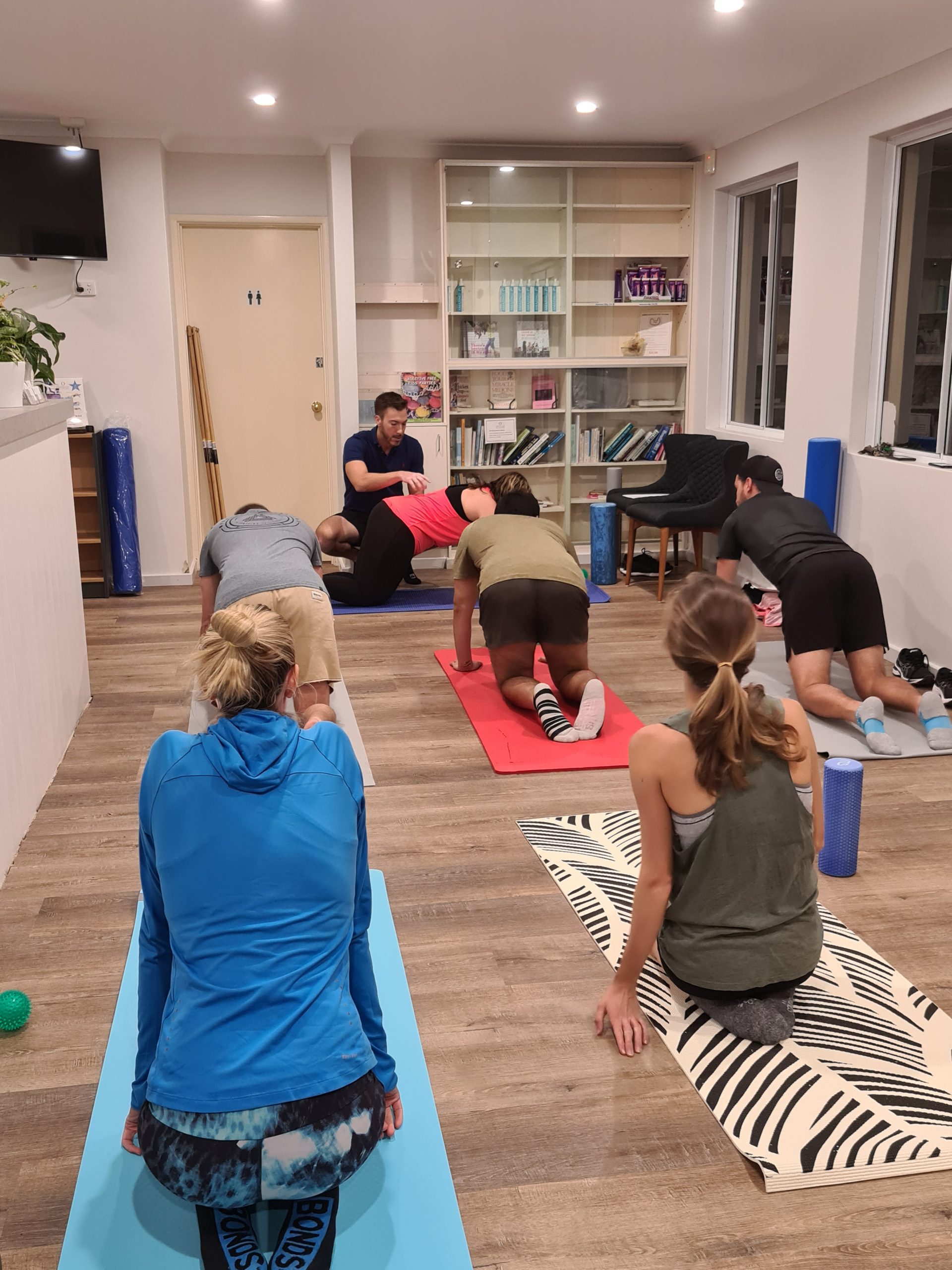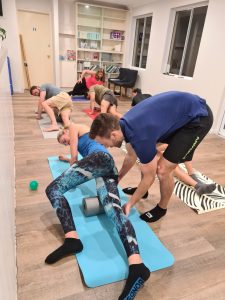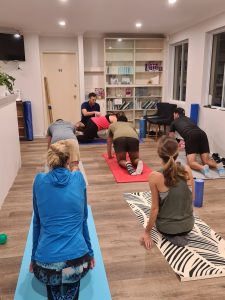168 Karrinyup Road, Karrinyup WA 6018
Monday - Friday: 7.30am to 6.30pm
Saturdays: 7.30am - 2.30pm
P (08) 9341 3020
168 Karrinyup Road, Karrinyup WA 6018
Monday - Friday: 7.30am to 6.30pm
Saturdays: 7.30am - 2.30pm
P (08) 9341 3020
168 Karrinyup Road, Karrinyup WA 6018 | Monday – Friday: 7.30am to 6.30pm & Saturdays: 7.30am – 2.30pm

Mobility is a hugely important aspect of health and body function, and yet it is very often neglected in favour of strength and/or aerobic exercise. With increased mobility, you are less likely to develop chronic injuries like bursitis or tendonitis, less likely to suffer from acute sprains and strains and much more likely to be able to touch your toes/squat down low or do repetitive tasks without pain or injury! Today we are going to delve into exactly what mobility means, what happens when you lose your mobility and some methods that you can use to improve your mobility and show your body some love.
Mobility refers to your ability to move freely and in a controlled manner – this is the entire range of motion that you are able to move in just by using your muscles. An example of good mobility is someone who can lift their leg up high onto a fence, or who can bend forward and place their hands on the floor. This can often be confused with flexibility which is the ability of your joints to move in a pain-free range (no matter how you are achieving that range) which includes lifting a leg further by pulling with your arms.
The difference between the two is the ability to move your arm/leg/spine through a range of motion with the local muscles alone, without assistance from an uninvolved section of the body.
Mobility and flexibility are BOTH important in the way that we move, and training one can often improve the other!
Mobility is an incredibly important part of our day to day lives but it DOES follow the old adage – IF YOU DON’T USE IT, YOU LOSE IT! Unfortunately for most people a loss of mobility isn’t noticed in a hurry, and can often be covered up by compensating for by using different muscles or moving differently. While this is great to accomplish a short-term task, in the long-term this compensation WILL cause issues further up or down the body.
A great example of reduced mobility causing problems in the body is that of the hip joint losing mobility and causing subsequent low back pain and/or core muscle injury/pubic pain. An interesting study titled ‘Hip-Spine Syndrome: When the Hip Does Not Move, the Spine Labours Double’ found that limited hip extension results in increased lumbar spine extension and thus an increase in lumbar spinal joint loading, thus leading to lower back pain and symptoms. This finding REALLY highlights the importance of being mobile in ALL of our joints because if one joint isn’t working well, others are sure to suffer.
As with almost every effective therapy for the body, improving your mobility will always be MOST efficient when we combine multiple strategies. This means that whilst stretching is good, stretching AND foam rolling is better. Better again would be combining regular stretching, foam rolling AND exercise is EVEN BETTER! With that in mind, here is a short list of common therapies that you can combine to improve your mobility.
If you find that you are less mobile than you used to be (or than you would like) or even if you just want to learn more about mobility techniques then YOU would surely benefit from attending our mobility workshop. During the workshop, Dr Sean runs through some of the most common techniques that he uses to improve mobility in order to get you moving and feeling your best, and will personally help you with your form to ensure you get the most out of your stretching and foam-rolling!
This month we are running a ‘Bring-a-Buddy’ discount, so if you want to attend and you also know someone who would benefit from attending with you then be sure to ask the lovely ladies at the front desk about it when you are in the clinic!
Alternatively, you can call (08) 9341 3020, Facebook message Karrinyup Wellness Centre or DM us on the Instagram account @karrinyupwellnesscentre.
Dr Sean Laurie
Chiropractor
B.Sc. (Chiro), B. Chiro DOCTOR OF CHIROPRACTIC
Dr Sean has completed training in the Sympathetic Dominance protocol that deals particularly with people who suffer from ongoing stress, and as part of that has had extensive dealings with issues relating to jaw function. In practice Dr Sean is able to perform both gentle and firm manual adjustments, as well as pelvic blocking, NOT, Thompson Drop-piece, Activator, Dry Needling and soft-tissue release techniques.
Graduating in 2012, Dr Sean completed his 5 years of Chiropractic training locally at Murdoch University.
Mon - Fri: 7.30am - 6.30pm
Sat: 7.30am - 2.30pm
168 Karrinyup Road
Karrinyup WA 6018
Parents often wonder what they can do to keep their children healthy and if there are ways ...
READ MOREZinc is a vital micronutrient that plays a key role in supporting immune function, wound ...
READ MOREEver wondered why some people seem to breeze through cold and flu season while others fall ...
READ MOREKWC is now stocking Owen’s Homeopathic remedies! Not only are they the easiest to use ...
READ MORETouch is what makes us real. Touch, often described as the first language we learn, is a ...
READ MORE
At the Karrinyup Wellness Centre we have brought together a team of chiropractors, naturopaths, massage therapists, kinesiologists and a dietitian all dedicated to providing a holistic approach to your health care. Every member of our team shares a common passion and drive: to help every person in their care to improve and reach their health and wellness potential naturally.
Servicing the areas of Karrinyup, Carine, Doubleview, Scarborough, Trigg, North Beach, Gwelup, Marmion, Duncraig and surrounding northern suburb areas.
168 Karrinyup Road Karrinyup WA 6018(08) 9341 3020
admin@wellness-centre.com.au
Get in Touch
168 Karrinyup Road Karrinyup WA 6018
Please fill out the form for any enquiries and one of our friendly staff will be in touch.
Please complete the details below.



